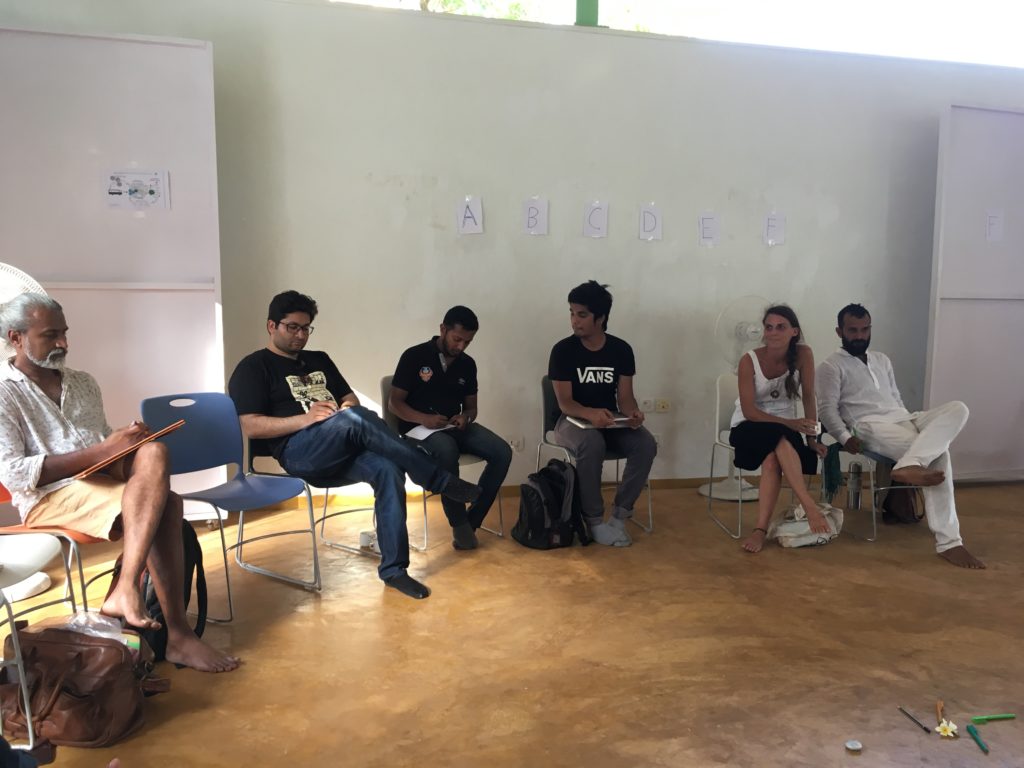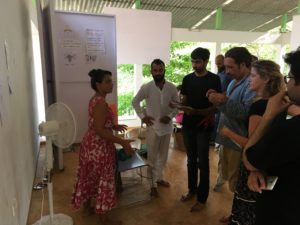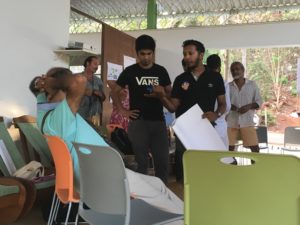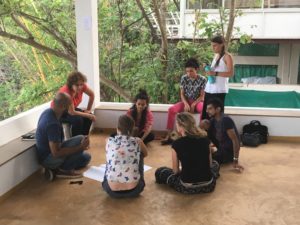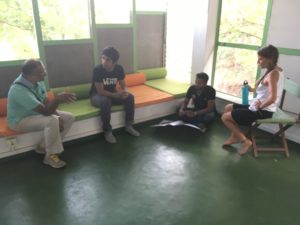Harvest from 24th April community meeting
25 people met on Monday to learn about progress in the Goa active citizenship platform and see how they could get involved. The meeting started in circle to hear who had come and what had inspired them to come. Some snippets include:
I feel like people actively need to be in governance. Initiatives like this are ways to form ideas to get citizen participation in governance
to meet more people and work with them
Curious to know what happens in these meetings
we are meeting positive ppl and It has given me some hope. With these progressive meetings we will have come up with actionable projects” I have seen systematic degradation of my state, everything going wrong. I would Love to help
I am doing little not so much for Goa. That is why I am here
as a follow up to the last meeting to take it forward from there
I believe in the core idea behind these meetings i.e. community coming together
Strong disconnect between social movement (strong) and the disconnected middle class/foreigner class/elite class. That problem needs to be solved. This way of organizing people can do a lot to bridge this divide
to see how we can go forward from here
I feel positive even if surrounded by darkness
to be inspired
Here to have better understanding of these issues by attending meetings like this
Progress to date on projects elaborated on 11th feb is as follows (a presentation on progress can be found here)
- 911 for democracy/Angry Goan Whats app helpline: tech ready to go live. Next step formulation of expert groups
- Green Wiki: map of issues created. Requires a person to collate information and do back end tech
- Eu Changemakers room: training and funding opportunity: some projects identified for elaboration in coming months
- Sustainable village model: Assagaon emerging as a target village for government as well as community members
The group went into open space to see what projects/issues those present wanted to work on. The following topics were posted:
| What message should a state level garbage campaign convey and what are ideas for a 3 month campaign? Noreen |
|
911 for Action: Act 1 issue, 1 action 1 area Reflect repeat – Vishal
|
| Inspiring/Inclusive visions for Goa 2035 (visualising/storytelling/ speculative decision) Ayaz |
|
How do we make government servants more accountable/service orientated? – Reboni |
| Illegal Groundwater extraction in villages – Sheldon |
| How do I conserve and protect local water bodies in the village? – Nathaniel |
| Mapping Biodiversity and traditional water sources at village level – Eric |
|
Helping Vasco to fight Coal – Shraya |
| Sustainable village Model – Felly |
| Community Currency- or local means of exchange – Salil |
| Invest in young people(Bop/Top/Xop)
(kids and youth) = Satyam |
Groups rapidly self-organised into 4 key conversations as per colour coding above (The Coal conversation did not take place). What follows in the next pages is the harvest of each conversation – highlighting insights, next steps and support needed.
Citizens Helpline focused on Garbage issue bringing public servant accountability- Jessica, Reboni, Noreen, Vishal, Ayaz, Urvashi, Jill
INSIGHTS
|
NEXT STEPS
HELP NEEDED – writing for 40 hours – experts – Satyam : an app in Bangalore : 60% of Pune waste is mapped in that – Public Notice of Pollution Control Board – Plastic manufacturers responsible for waste +50 microns |
Investing In Young People – Children & Youth: Satyam, Shamorlee, Amrita, Shraya, Tamer
| Key Insights
– Children don’t grow up to be engaging or active citizens as a child they are discouraged from asking questions, told what to do rather than empowered to make their choices or decisions 1. Shamaollee’s work with children in Karmali village. They suggested local river pollution as a issue to raise awareness and made a play to do so. 2. Tamer gave example of his child Tae’s school play 3. Amrita gave example of Kid Powered Media based in Delhi. Uses different mediums to talk about issues selected by the children. Topics by the children. 4. Alternative Learning platform in Delhi – Amrita was part of in Delhi |
| Next Steps
– Designing School modules, Aganwadi and Community (Assagao) Programs that have child participation in its core. (Child Participation in program design – i.e. the class of children chose what topics they will be taught) Resource – Shreya has a contact in Aganwadi Goa i.e. ICDS Dept. of Goa. – Collating and Designing the modules – Adding the concept of child participation in B.Ed Course (teachers training courses) (empowering, encouraging questioning -specially why, child should be made participant of the learning process. Most importantly, they should have someone ready to listen with attention and seriousness) – Directorate Of Education (DoE) Contact Possible Resource: Shamaollee has a contact for short time. She knows the collector there. – Experts – Media Oureach for Experts engagement |
WATER: Water Management : Sheldon, Nathaniel, Eric, Jill
INSIGHTS
|
NEXT STEPS
HELP NEEDED:
|
Sustainable Village Communities: Felly, Salil, Stalin, Tamer, Joanna
| INSIGHTS
Few people are talking about the community issues- How to get community involved in sustainable village model? Money is trust → exchange products Consumer and Producer in community Critical Mass 30% → Changes Conversation Two side of the village good/bad Precious Asset Base – community mapping Refine Issue Reason why is sustainable Students conceptualize ideal village – – Child as the main target audience Event: Mobilize people by creative why Value Talents and products and trade Connect the Right People Exposure visit Co-creating Communities and the surroundings Role of Individuals in Society What does the community want? – Painting the picture with the community members : 10-15 down the line : how will a sustainable community look like? Convince/Mobilize Community Driven Activities (festivals) Identify unsustainable parts →communication/framing How can others feel the same? |
NEXT STEPS
|
After groups fed back to each other, the question was raised as to whether Assagao should be a pilot village for all of the projects discussed as a way of focusing energies and impact. Many felt this was a good idea. There was also interest in the notion of micro-volunteering and enabling citizens to volunteer short amounts of time to dedicated projects of interest/capacity/time.
Summer/Monsoon Schedule
In the spirit of collective and collaborative leadership we are asking everyone from within the community to step up and be a part of these meetings hosting team over the coming months. The hosting and harvesting team designs the flow of the meeting beforehand, and design/creates the harvest to be shared with the greater community the week following the event. Ideally each host team will have 6 members to fairly share the work.
| May | June | July | August | September |
|---|---|---|---|---|
| Achintya | Amrita | Amrita | Joanna | Joanna |
| Amrita | Jill | Jessica | Tamer | Tamer |
| Tamer | Moira meeting | (shall we have an all Goa civil society gathering : ) ? | emerging circlewallas | |
| Joanna | ||||
OCTOBER
Training for new Circlewallas in hosting/harvesting inc translation into Konkani/Marathi
KEY ACTIONS:
- Continuity of action in the 4 groups – who feels called to step forward and take responsibility for calling the follow up meeting and apprenticing in the art of hosting and harvesting conversations that matter? Circlewallas will support and mentor you to host your own meetings using participatory leadership practices. We are actively looking for people who wish to learn/practice in this approach to participatory community leadership and engage in supporting their communities.
- Engage with (Social work) Faculty colleagues etc to tap potential of college students during the holidays to support.
- Need for future meets to engage with more diverse group – eg village level, grassroots, goan youth, south Goa

